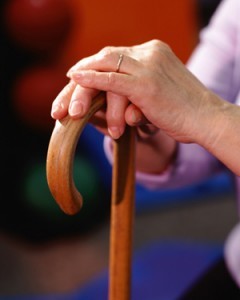Risk Factors for Falls (And the Damage They Cause)
 There are a large number of risk factors for falls. The results of patient falls can be staggering: falls are the leading cause of fatal and nonfatal injures in people 65 years-old and older in the United States. They can play a catastrophic role in this population.
There are a large number of risk factors for falls. The results of patient falls can be staggering: falls are the leading cause of fatal and nonfatal injures in people 65 years-old and older in the United States. They can play a catastrophic role in this population.
Injurious falls can have huge financial implications due to extensive damages. These may include fractures, dislocations, intracranial injuries and crushing injuries. Extended hospitalizations and surgery may be required. Some elders who fall will never walk again and lose all independence.
Definitions of Falls
There are a variety of definitions of a fall. According to the National Database of Nursing Quality Indicators, a fall is “an unplanned descent to the floor – or extension of the floor such as a trash can with or without injury to the patient.”
Each healthcare facility that is accredited by The Joint Commission and receives Medicare or Medicaid reimbursements is required to have a fall prevention program in effect with continuous monitoring of the effectiveness.
Risk Factors for Falls
Fall risk factors are called intrinsic and extrinsic factors. Intrinsic factors are considered “person factors” which include changes in cognition or incontinence that might result from disease/illness. Extrinsic factors are also known as environmental factors and are external to the person such as tubes/drains.
Risk factors in the hospital setting include:
- History of previous falls (in the past 3 months)
- Medications (benzodiazepines, antidepressants, antiarrhythmics)
- Incontinence (bowel of bladder)
- Leg weakness
- Unsteady gait
- Poor balance
- Mental status change (confusion, disorientation and altered level of consciousness)
- Orthostatic hypotension
Environmental factors should be considered when assessing a fall risk in the hospital.
- Presence of objects that may tether the patient such as IV tubes and drains
- Wet or slippery floor surfaces
Fall prevention
A few ounces of prevention can go a long way. Effective communication between the healthcare team, patients and their families impacts patient safety. There are a variety of fall prevention programs which can be implemented in the clinical setting such as the Fall Prevention Intervention Guidelines by Risk which was written by Johns Hopkins Hospital.
If a fall occurs, updating the plan of care is important. This plan and communication tool are reviewed and utilized by the nursing staff. What types of changes can be incorporated into this plan of care? How often does one evaluate a patient’s fall risk? What facts should be incorporated into an incident report? Who reviews the incident report? Does an incident report need to be completed with every fall? The answers to these questions help to define the answers to questions about liability.
Barbara Levin BSN RN ONC CMSRN LNCC is an orthopaedic clinical scholar and expert witness. Learn more about falls by investing in a copy of Analyzing Falls, Pressure Sores and IV Therapy Cases. Sharpen your skills for the analysis of a patient fall case. Go even deeper with a 6 hour online on demand course on patient falls: Falls Course: The Impact of Head Injury. View it at your convenience through our digital downloads.
